- Cultivation of Bell-shaped Apple Tree
- 1. Site Selection
- 2. Soil Preparation
- 3. Planting
- 4. Watering
- 5. Pruning
- 6. Fertilization
- 7. Pest and Disease Control
- 8. Harvesting
- Pruning Tips for Bell-shaped Apple Tree
- 1. Timing
- 2. Tools
- 3. Objective
- 4. Remove Dead or Diseased Branches
- 5. Thin Out and Shape the Tree
- 6. Pruning Cuts
- 7. Prune Water Sprouts
- 8. Use Pruning Paint
- 9. Clean Up
- 10. Regular Maintenance
- Varieties of Bell-shaped Apple Tree
- 1. Bellflower Apple
- 2. Lady Apple
- 3. Cortland Apple
- 4. Empire Apple
- 5. Baldwin Apple
- Ideal Growing Conditions for Bell-shaped Apple Tree
- Soil
- Sunlight
- Temperature
- Watering
- Fertilization
- Pruning
- Pollination
- Pest and Disease Control
- Harvesting
- Pests and Diseases That Affect Bell-shaped Apple Tree
- Pests
- Diseases
- Harvesting and Storing Bell-shaped Apples
- When to Harvest
- How to Harvest
- Storing Apples
- Using Harvested Apples
- Delicious Recipes Using Bell-shaped Apples
- Apple Pie with Caramel Sauce
- Apple Crumble
- Apple Salad with Honey Mustard Dressing
- Question-answer:
- What is a bell-shaped apple tree?
- How do you cultivate a bell-shaped apple tree?
- What are some popular varieties of bell-shaped apple trees?
- Why is pruning important for a bell-shaped apple tree?
- When is the best time to prune a bell-shaped apple tree?
- How often should a bell-shaped apple tree be pruned?
- Can a bell-shaped apple tree be grown in a container?
- Video: Training and Pruning Apple Trees – Central Leader or Open Center? | Pruning Fruit Trees
Growing apple trees is a rewarding endeavor that can provide you with delicious fruit for years to come. One popular and visually-appealing variety is the bell-shaped apple tree. Known for its distinctive shape, this tree adds a unique touch to any orchard or garden.
When it comes to cultivation, bell-shaped apple trees require similar care to other apple tree varieties. They thrive in well-drained soil and prefer full sun exposure. It is important to choose the right rootstock for your bell-shaped apple tree, as this will affect its growth habit and overall size. Dwarf and semi-dwarf rootstocks are often preferred for easier maintenance and harvesting.
Pruning plays a vital role in shaping and maintaining the bell-shaped apple tree’s distinctive form. Regular pruning helps to remove dead or damaged branches, improve air circulation, and promote the growth of new fruiting wood. It is recommended to prune the tree during the dormant season to minimize stress and allow for better healing.
When it comes to varieties, there are several options available for bell-shaped apple trees. Some popular choices include ‘Bellflower,’ ‘Belle de Boskoop,’ and ‘Belle de Boskoop.’ These varieties offer a range of flavors and can be enjoyed fresh or used in various culinary applications.
If you’re looking to add a unique and visually-striking apple tree to your garden or orchard, consider the bell-shaped variety. With proper cultivation, pruning, and a selection of the right variety, you can enjoy the beauty and taste of bell-shaped apple trees for years to come.
Cultivation of Bell-shaped Apple Tree
The cultivation of bell-shaped apple trees requires careful attention to growing conditions, pruning techniques, and proper care. Here are some key steps to successfully cultivate a bell-shaped apple tree:
1. Site Selection
Choose a location that receives full sun and has well-drained soil. The soil should have a pH level between 6.0 and 7.0, which is slightly acidic to neutral.
2. Soil Preparation
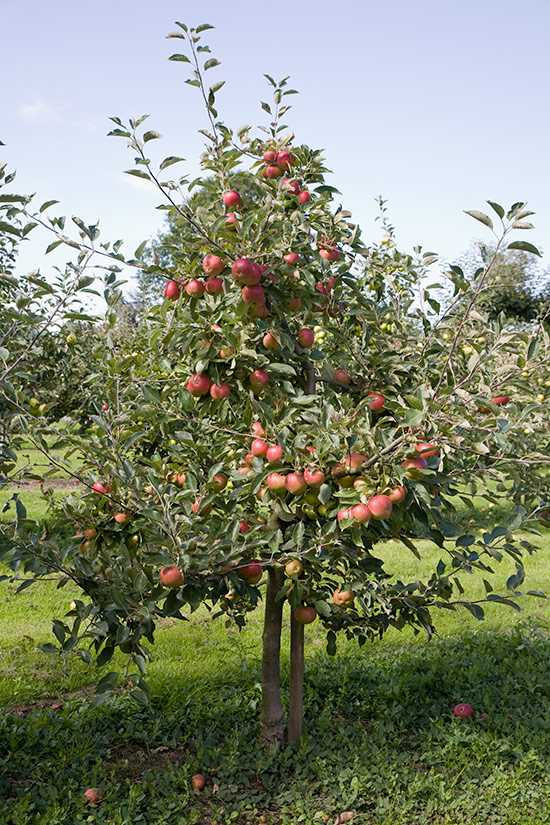
Prepare the soil by removing any weeds or grass and loosening it with a garden fork. Add organic matter such as compost or well-rotted manure to improve soil fertility and drainage.
3. Planting
Plant the bell-shaped apple tree in early spring or fall, when the soil is moist and temperatures are moderate. Dig a hole that is slightly larger than the tree’s root ball and carefully place the tree in the hole, making sure the roots are spread evenly. Backfill the hole with soil, firming it gently around the tree.
4. Watering
Water the newly planted tree thoroughly to ensure that the roots are well hydrated. Keep the tree well watered, particularly during dry periods, but avoid overwatering as this can lead to root rot. Aim for deep, infrequent watering rather than frequent shallow watering.
5. Pruning
Prune the bell-shaped apple tree in late winter or early spring before new growth begins. Remove any dead, damaged, or diseased branches. Thin out crowded branches to improve air circulation and light penetration. Train the tree to a central leader or open vase shape to promote proper growth.
6. Fertilization
Fertilize the bell-shaped apple tree in early spring and again in late spring or early summer. Use a balanced fertilizer with a ratio of 10-10-10 or similar. Follow the manufacturer’s instructions for application rates and methods.
7. Pest and Disease Control
Monitor the tree regularly for signs of pests and diseases, such as apple scab or aphids. Use organic or chemical control methods as needed to protect the tree’s health. Proper pruning and good air circulation can help prevent disease outbreaks.
8. Harvesting
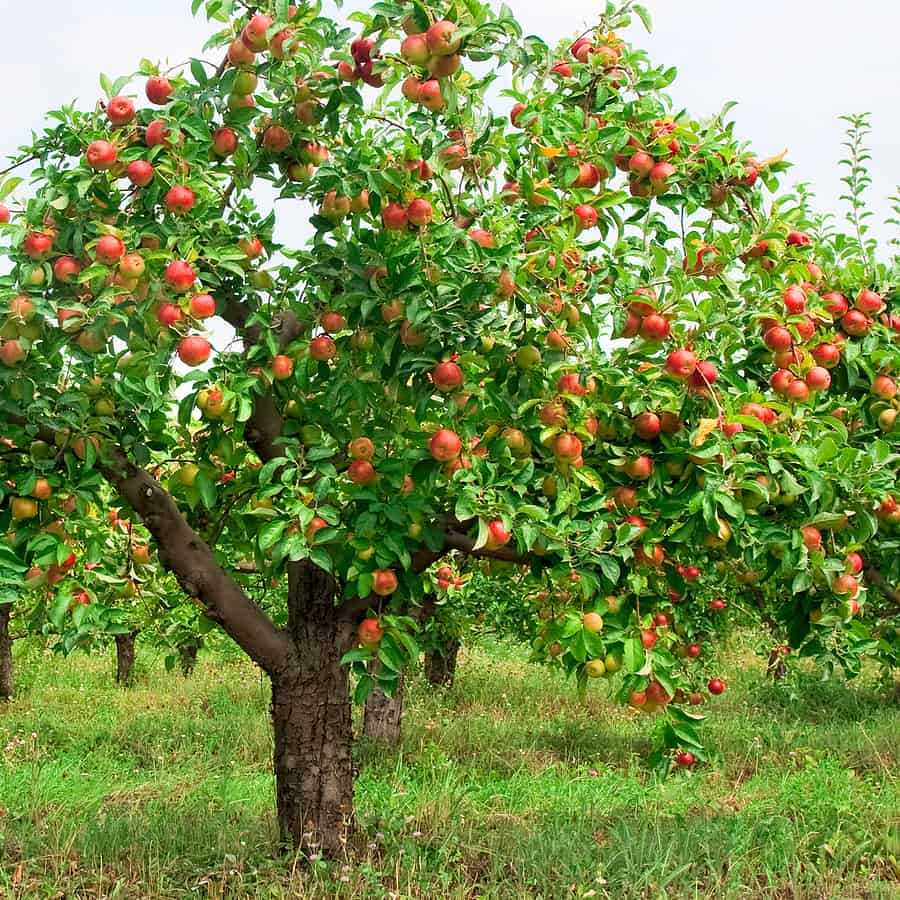
Harvest the bell-shaped apples when they are fully ripe. The exact timing will depend on the variety and climate, but generally, they are ready to pick in late summer or early fall. Gently twist or lift the apple to detach it from the tree.
Following these cultivation practices will help ensure a healthy and productive bell-shaped apple tree. Remember to adjust the specific steps based on your region’s climate and the specific needs of your tree variety.
Pruning Tips for Bell-shaped Apple Tree
1. Timing
Pruning of bell-shaped apple trees should be done during the winter dormant season, preferably in late winter or early spring before the tree starts to bud.
2. Tools
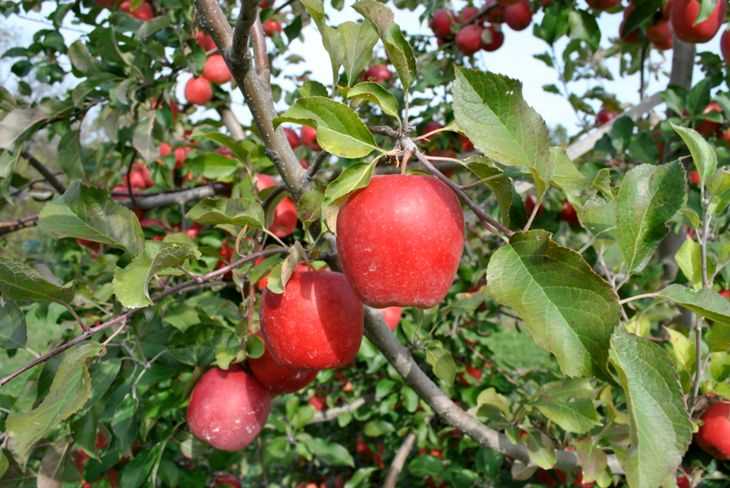
Use sharp, clean pruning shears or loppers to make clean cuts. Sterilize the tools with a mixture of bleach and water to prevent the spread of diseases.
3. Objective
The main objective of pruning bell-shaped apple trees is to promote healthy growth, improve air circulation, and maintain the overall shape of the tree for optimal yield.
4. Remove Dead or Diseased Branches
Start by removing any dead, diseased, or damaged branches. Look for branches that are dry, discolored, or show signs of infection or disease. Cut them back to the nearest healthy junction.
5. Thin Out and Shape the Tree
Thin out the crowded branches to improve air circulation and sunlight penetration. Remove the branches that are crossing, rubbing, or competing for space. Shape the tree by selectively pruning upper branches to maintain a bell-shaped appearance.
6. Pruning Cuts
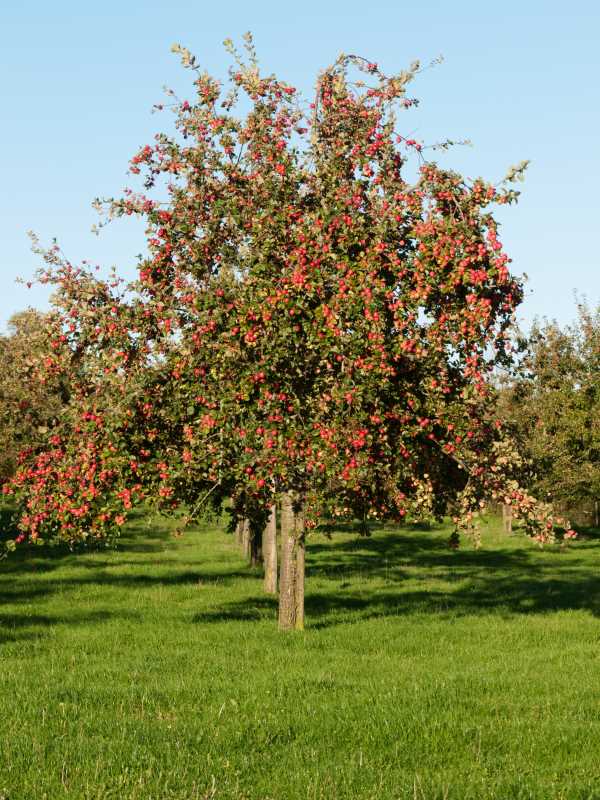
Make pruning cuts at a 45-degree angle just above a bud or lateral branch. Avoid leaving stubs, as they can be a breeding ground for diseases and pests.
7. Prune Water Sprouts
Water sprouts are fast-growing vertical shoots that are often unproductive. Prune these sprouts completely to redirect the tree’s energy to more productive branches.
8. Use Pruning Paint
To protect the tree from infections and pests, apply a thin layer of pruning paint or a wound sealant to the pruning cuts. This will help prevent diseases from entering the tree through open wounds.
9. Clean Up
After pruning, clean up and remove all pruned branches and debris from the area. This will minimize the risk of diseases and pests spreading to the tree.
10. Regular Maintenance
Regularly inspect the tree for any additional pruning needs throughout the year. Cut back any diseased, damaged, or crossing branches as soon as they are noticed to maintain the health and shape of the bell-shaped apple tree.
By following these pruning tips, you can ensure the health and productivity of your bell-shaped apple tree.
Varieties of Bell-shaped Apple Tree
The bell-shaped apple tree is a unique variety that produces fruit with a distinct bell shape. While not as common as other apple varieties, there are a few different types available for cultivation.
1. Bellflower Apple
- The Bellflower apple is one of the most well-known varieties of bell-shaped apple trees.
- It has a crisp and slightly tart flavor, making it great for eating fresh or using in baking.
- The fruit is large and has a pale yellow skin with a red blush.
- It is a mid-season apple, typically ready for harvest in late summer or early fall.
2. Lady Apple
- The Lady apple is a smaller variety of bell-shaped apple tree, often used for decoration or in culinary presentations.
- It has a sweet and tangy flavor, with a firm and crisp texture.
- The fruit is small, typically measuring around 2 inches in diameter, and has a bright red or yellow skin.
- It is an early-season apple, usually ready for harvest in late summer.
3. Cortland Apple
- The Cortland apple is a popular variety that also has a slightly bell-shaped appearance.
- It has a sweet and slightly tart flavor, making it versatile for eating fresh, baking, or making applesauce.
- The fruit is medium to large in size and has a bright red skin with white flesh.
- It is a mid-season apple, typically ready for harvest in early to mid-fall.
4. Empire Apple
- The Empire apple is another variety that can have a slightly bell-shaped form.
- It has a sweet and crisp flavor, with a hint of tartness.
- The fruit is medium to large in size and has a deep red skin.
- It is a late-season apple, usually ready for harvest in mid-fall.
5. Baldwin Apple
- The Baldwin apple is an heirloom variety that can also exhibit a bell-like shape.
- It has a sweet and tart flavor, with a crisp texture.
- The fruit is medium to large in size and has a green or yellow skin with a red blush.
- It is a late-season apple, typically ready for harvest in late fall.
These are just a few examples of the varieties of bell-shaped apple trees that are available. Each variety has its own unique characteristics, but all are known for their distinctive bell shape and delicious flavor. Whether you prefer a sweet or tart apple, there is a bell-shaped variety that is sure to please your taste buds.
Ideal Growing Conditions for Bell-shaped Apple Tree
Soil
The bell-shaped apple tree thrives in well-drained soil that is rich in organic matter. The pH level of the soil should be slightly acidic to neutral, ideally between 6.0 and 7.0. Testing the soil’s pH level is recommended before planting.
Sunlight
This apple tree variety requires full sun exposure for at least 6 to 8 hours a day. A sunny location with minimal shade will ensure optimal photosynthesis and fruit production.
Temperature
The bell-shaped apple tree is typically grown in moderate to cool climates. It thrives in regions with average temperatures ranging from 60°F (15°C) to 75°F (24°C) during the growing season. It can tolerate some cold temperatures but may require protection during frosty periods.
Watering
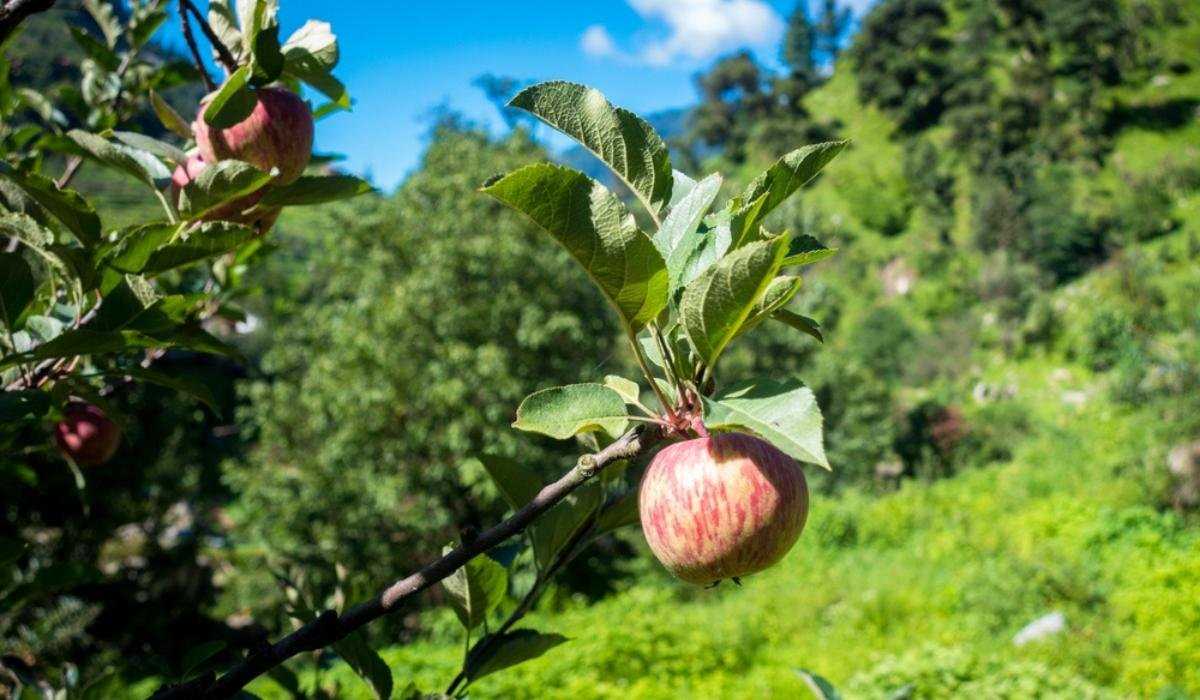
It is important to provide consistent and adequate water to the bell-shaped apple tree. The tree should be watered deeply, ensuring that the soil is moist but not waterlogged. Regular watering is crucial during the flowering and fruiting stage.
Fertilization
Appropriate fertilization is essential for the growth and productivity of the bell-shaped apple tree. Before planting, incorporating organic matter such as compost or well-rotted manure into the soil can provide a nutrient-rich foundation. Regular applications of balanced fertilizers, high in nitrogen, phosphorus, and potassium, are recommended during the growing season.
Pruning
Pruning is necessary to maintain the shape and health of the bell-shaped apple tree. It should be done during the dormant season, typically in late winter or early spring. Pruning helps to remove diseased or damaged branches, improve air circulation, and stimulate new growth. Proper pruning techniques should be followed to avoid unnecessary damage to the tree.
Pollination
The bell-shaped apple tree is not self-fertile, meaning it requires cross-pollination from another compatible apple tree variety. It is important to plant at least one other apple tree nearby to ensure successful pollination. Selecting a compatible variety that blooms around the same time will ensure adequate cross-pollination.
Pest and Disease Control
Vigilance is key when it comes to pest and disease control for the bell-shaped apple tree. Regular inspection of the tree and surrounding area can help identify and address any issues early on. Implementing proper sanitation practices, such as removing fallen leaves and debris, can help prevent the spread of diseases. Using organic or chemical pesticides may be necessary to control pests or diseases if they become a problem.
Harvesting
The bell-shaped apple tree typically begins to bear fruit after 2 to 4 years of planting. Harvesting should be done when the fruits are fully ripe and have reached their characteristic bell shape. Gently twist the apples off the branch, as pulling them may damage the tree. Proper storage is essential to maintain the fruits’ quality and extend their shelf life.
Pests and Diseases That Affect Bell-shaped Apple Tree
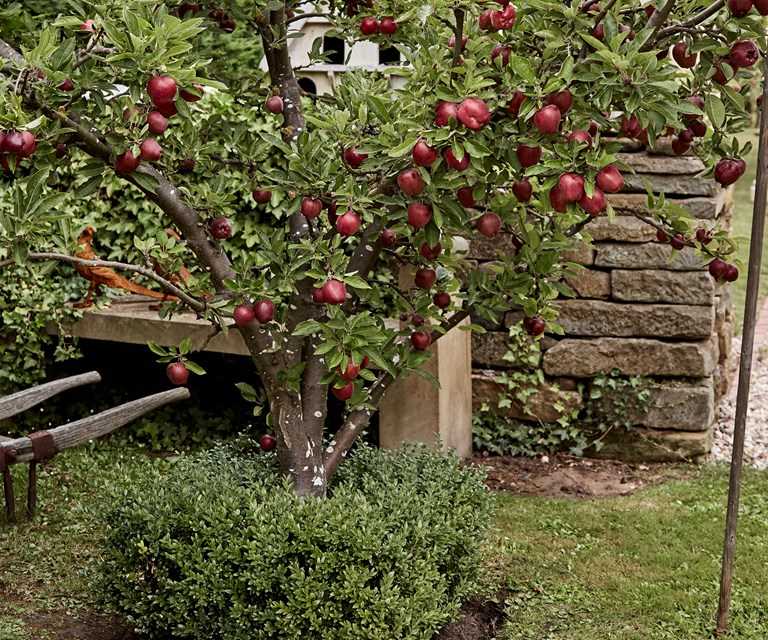
Bell-shaped apple trees, like other fruit trees, are susceptible to certain pests and diseases. It is important to be aware of these issues and take preventive measures to ensure the health and productivity of your apple tree.
Pests
- Aphids: These small insects feed on the sap of the apple tree, causing yellowing leaves, stunted growth, and distorted fruit. Regularly inspect your tree and use insecticidal soap or horticultural oil to control aphid infestations.
- Codling Moth: The codling moth larvae feed on the apple fruit, creating tunnels and causing it to rot. To prevent infestation, use pheromone traps and apply insecticides at appropriate times during the growing season.
- Apple Maggot: This pest lays eggs in the developing fruit, causing brown tracks and deformed apples. To prevent apple maggot infestation, place sticky traps and use insecticides as recommended by a professional.
- Apple Sawfly: The larvae of the apple sawfly feed on the leaves, causing defoliation and reduced fruit production. Handpicking and destroying the larvae can be effective, along with using insecticidal sprays.
Diseases
- Apple Scab: Apple scab is a fungal disease that causes dark scaly lesions on the leaves, fruit, and twigs. To control apple scab, remove and destroy infected plant parts, and apply fungicides according to the recommended schedule.
- Fire Blight: Fire blight is a bacterial disease that affects blossoms, fruit, and branches. Infected parts turn black and resemble fire damage. Pruning infected branches and using antibiotic sprays can help control fire blight.
- Cedar Apple Rust: This fungal disease causes orange spots and galls on the leaves and fruit. It is spread by cedar trees, so removing nearby cedar trees or using fungicides can help prevent infection.
- Powdery Mildew: Powdery mildew appears as a white powdery coating on the leaves and can affect the fruit as well. Prune affected branches and use fungicides to control powdery mildew.
Regular monitoring of your bell-shaped apple tree for signs of pests and diseases is crucial to catch and address these issues early. Always follow proper cultural practices, including regular pruning, proper watering, and fertilization, to ensure the overall health and productivity of your apple tree.
Harvesting and Storing Bell-shaped Apples
Once your bell-shaped apple tree has matured and the fruits have reached their full size and color, it’s time to harvest them. Harvesting apples at the right time ensures that they are juicy and flavorful.
When to Harvest
The timing of apple harvest largely depends on the specific variety you are growing. However, there are a few general signs to look for:
- The apples have reached their full size and color.
- The apples easily detach from the tree when gently twisted or lifted.
- The seeds inside the apples have turned brown.
It’s important to harvest the apples before they become overripe, as this can lead to a loss of flavor and texture.
How to Harvest
To harvest bell-shaped apples, follow these steps:
- Wear gloves to protect your hands and prevent bruising the apples.
- Use pruning shears or sharp scissors to cut the stem of each apple, leaving a small portion attached to the fruit.
- Place the harvested apples gently in a basket or crate, taking care not to stack them on top of each other.
Storing Apples
Proper storage is key to preserving the freshness and flavor of bell-shaped apples. Here are some tips for storing your harvest:
- Sort the apples and remove any damaged or bruised ones, as they can cause the healthy apples to spoil faster.
- Store the apples in a cool, dark place with a temperature of around 32 to 40 degrees Fahrenheit (0 to 4 degrees Celsius).
- Avoid storing apples near other produce, as they release ethylene gas, which can cause other fruits and vegetables to ripen and spoil more quickly.
- Consider using apple crates or cardboard boxes for storage, as they allow for proper air circulation.
- Check on the stored apples regularly and remove any that show signs of spoilage.
Using Harvested Apples
Bell-shaped apples can be enjoyed fresh or used in a variety of culinary preparations, such as pies, sauces, or caramelizing for desserts. The crisp texture and sweet-tart flavor make them a versatile choice for both savory and sweet dishes.
Remember to wash the apples thoroughly before consuming or using them in recipes. Enjoy the fruits of your labor and savor the delicious taste of your homegrown bell-shaped apples!
Delicious Recipes Using Bell-shaped Apples
Apple Pie with Caramel Sauce
This classic apple pie recipe is enhanced with a rich caramel sauce, boasting a perfect balance of sweetness and tartness.
To make this mouthwatering dessert, you’ll need:
- 6 medium-sized bell-shaped apples, peeled, cored, and sliced
- 1 cup granulated sugar
- 1/4 cup all-purpose flour
- 1 teaspoon ground cinnamon
- 1/4 teaspoon salt
- 2 tablespoons unsalted butter
- 1 double-crust pie pastry
- 1/4 cup heavy cream
- 1/2 cup caramel sauce
For detailed instructions, follow these steps:
- Preheat your oven to 375°F (190°C)
- In a large mixing bowl, combine the sliced apples, sugar, flour, cinnamon, and salt. Mix well.
- Line a 9-inch pie dish with one of the pie crusts. Pour the apple mixture into the crust and dot with butter.
- Place the second pie crust on top and seal the edges. Brush the crust with heavy cream.
- Bake for 45-50 minutes, or until the crust is golden brown and the apples are tender.
- Remove from the oven and allow to cool for a few minutes.
- Drizzle the caramel sauce over the pie before serving.
Apple Crumble
This warm and comforting apple crumble is an easy and delicious dessert that showcases the natural flavor of bell-shaped apples.
Ingredients needed for this recipe:
- 4-5 bell-shaped apples, peeled, cored, and sliced
- 1/2 cup all-purpose flour
- 1/2 cup rolled oats
- 1/2 cup brown sugar
- 1/2 teaspoon ground cinnamon
- 1/4 cup unsalted butter, softened
Here’s how you can make this delightful dessert:
- Preheat your oven to 375°F (190°C)
- In a mixing bowl, combine the flour, oats, brown sugar, cinnamon, and softened butter. Mix until crumbly.
- Place the sliced apples in a baking dish and sprinkle the crumble mixture evenly over them.
- Bake for 25-30 minutes, or until the topping is golden brown and the apples are tender.
- Allow the apple crumble to cool slightly before serving. Enjoy it plain or with a scoop of vanilla ice cream.
Apple Salad with Honey Mustard Dressing
This light and refreshing apple salad is the perfect side dish or light lunch option, combining the crispness of bell-shaped apples with a tangy honey mustard dressing.
For this delicious salad, gather the following ingredients:
- 2 bell-shaped apples, thinly sliced
- 4 cups mixed salad greens
- 1/2 cup walnuts, chopped
- 1/4 cup dried cranberries
- 1/4 cup crumbled blue cheese
Follow these steps to create this tasty salad:
- In a large salad bowl, combine the sliced apples, salad greens, walnuts, dried cranberries, and blue cheese.
- In a separate small bowl, whisk together the honey, mustard, olive oil, and apple cider vinegar to make the dressing.
- Pour the dressing over the salad and toss gently to coat.
- Serve the apple salad immediately and enjoy!
Question-answer:
What is a bell-shaped apple tree?
A bell-shaped apple tree is a type of apple tree that has a distinctive shape, with branches that spread outwards and droop slightly downwards, resembling the shape of a bell.
How do you cultivate a bell-shaped apple tree?
Cultivating a bell-shaped apple tree involves selecting a suitable variety, preparing the soil, planting the tree, and providing it with proper care, including watering, fertilizing, and pruning.
What are some popular varieties of bell-shaped apple trees?
Some popular varieties of bell-shaped apple trees include Cox’s Orange Pippin, Golden Delicious, Granny Smith, Honeycrisp, Jonathan, and McIntosh.
Why is pruning important for a bell-shaped apple tree?
Pruning is important for a bell-shaped apple tree to maintain its shape, remove diseased or damaged branches, improve airflow and sunlight penetration, and stimulate new growth and fruit production.
When is the best time to prune a bell-shaped apple tree?
The best time to prune a bell-shaped apple tree is during the late winter or early spring, before the tree starts actively growing. Pruning during this time minimizes stress on the tree and allows for better healing of any cuts or wounds.
How often should a bell-shaped apple tree be pruned?
A bell-shaped apple tree should be pruned annually, preferably during the late winter or early spring. Regular pruning helps maintain the tree’s shape, promotes better fruiting, and allows for better disease and pest control.
Can a bell-shaped apple tree be grown in a container?
Yes, a bell-shaped apple tree can be grown in a container. However, it is important to choose a suitable dwarf or semi-dwarf variety and provide proper care, including regular watering, adequate sunlight, and proper fertilization.







